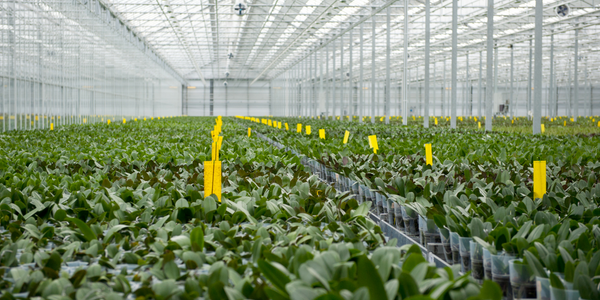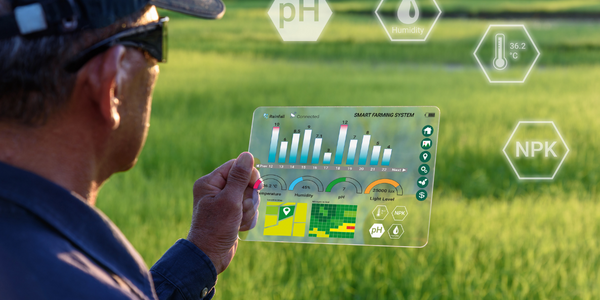Download PDF
The Poseidon Project
Technology Category
- Platform as a Service (PaaS) - Connectivity Platforms
- Platform as a Service (PaaS) - Data Management Platforms
Applicable Industries
- Agriculture
- Education
Applicable Functions
- Logistics & Transportation
- Product Research & Development
Use Cases
- Smart Irrigation
- Farm Monitoring & Precision Farming
- Water Utility Management
Services
- Cloud Planning, Design & Implementation Services
- Data Science Services
The Challenge
Irrigation is essential to grow the crops that feed and clothe the human population – but overconsumption of water is draining the earth’s river basins faster than rain can replenish them. Humanity’s growing water footprint is partly a function of our increasing population; but it is also compounded by the fact that irrigation systems, especially in the developing world, are often extremely inefficient. The UN Food and Agriculture Organization states that even a good irrigation scheme is only 50-60 percent efficient. Poorly built systems can result in the vast majority of the water being lost to evaporation, seepage and other problems before it reaches the fields. Moreover, once it gets there, if farmers choose to irrigate at the wrong time (for example, just before it rains), the water will be wasted and the crops may even be damaged.
About The Customer
The Poseidon Project is a voluntary initiative led by the IBM Center for Advanced Studies in Amsterdam and the Dutch Courage Foundation. It aims to build a global community to find solutions that reduce water usage by applying Internet of Things technologies, especially in the agricultural sector. The project is led by Robert-Jan Sips, Research Lead at IBM’s Center for Advanced Studies in Amsterdam. The project was initiated as a way to educate farmers about water usage, helping them avoid waste and inefficiency, and raise awareness about a key environmental issue for students and the general population.
The Solution
By developing low-cost Internet of Things-enabled soil moisture sensors, the Poseidon Project aims to revolutionize agriculture by helping farmers pick the most effective times to irrigate their crops. The project involves using a low-cost Raspberry Pi computer to monitor soil moisture, temperature and air pressure, and upload the data using the MQTT protocol to the cloud. The IBM® Internet of Things Foundation acts as a message broker between all the Raspberry Pi machines and IBM Bluemix™. The Bluemix cloud-based application platform stores the data in a highly scalable IBM Cloudant® database, and enables users to build applications that present the data in graphical form, as well as pushing it out to Twitter and sending notifications to users’ mobile phones.
Operational Impact
Related Case Studies.

Case Study
Intelligent Farming with ThingWorx Analytics
Z Farms was facing three challenges: costly irrigation systems with water as a limited resource, narrow optimal ranges of soil moisture for growth with difficult maintenance and farm operators could not simply turn on irrigation systems like a faucet.

Case Study
Greenhouse Intelligent Monitoring and Control Solution
Farming Orchids is the most successful form of precision farming in Taiwan, and also the most exported flower. Orchids need a specific temperature and humidity conditions to grow and bloom, and its flowering time may not be in line with market demands, so the price collapses when there is overproduction. Therefore, some farmers began to import automated greenhouse control systems for breeding and forcing, which not only improves quality, but also effectively controls the production period and yield to ensure revenue. In 2012, an orchid farmer built a Forcing Greenhouse of about 200 pings (approximately 661 Square Meters) in Tainan, Taiwan. The system integrator adopted Advantech’s APAX-5000 series programmable automation controllers to build the control platform, coupled with Advantech WebAccess HMI/SCADA software, to achieve cloud monitoring. The staff of the orchid field can monitor important data anytime via smart phone, iPad, and other handheld devices, and control the growth and flowering conditions. System requirements: In the past, most environmental control systems of orchid greenhouses in Taiwan used PLCs (Programmable Logic Controller) with poorscalability and control, and could not be connected to the Internet formonitoring from the cloud. For advanced database analysis and networking capability, the PC platform must be adopted. Therefore, PAC Systems (Programmable Automation Controller) with both PLC programming capabilities andPC functions is a better choice.The environmental control of the Orchid greenhouse switches on and off devices like fan, shade net, cooling/heat pump, liquid flow control, water-cooling wall etc. It is controlled by a control panel of electric controllers, and is driven by a motor, to adjust the greenhouse temperature, humidity, and other environmental conditions to the set parameters.

Case Study
Enabling Internet of Things Innovation in Agriculture
DigiBale, wanted to apply technology know-how and IP from implementations successfully to more agriculture sectors including cotton, forestry, sugarcane and cattle. However, farmers and growers still have worries about the connected technology.

Case Study
Precision beekeeping with wireless temperature monitoring
Honeybees are insects of large economic value and provide a vital service to agriculture by pollinating a variety of crops. In addition, bees provide us with valuable products such as honey, beeswax, propolis, bee venom, etc. Monitoring of honeybee colony health, population, productivity, and environmental conditions affecting the colony health have always been exceedingly difficult tasks in apiculture. Research has shown that even small deviations (by more than 2°C) from the optimal temperatures have a significant influence on the development of the brood and the health of adult bees.







